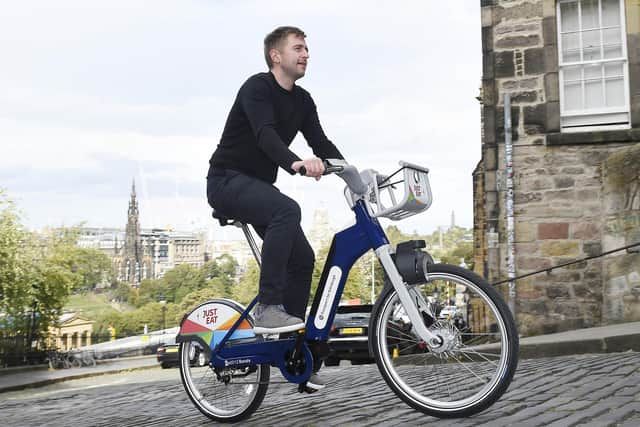E-bikes ‘unlikely to help people hit recommended exercise levels’
Experts found that people riding motorised electric bikes tended to take fewer and less physically demanding trips than conventional cyclists.
However, they said the bikes could encourage people who might otherwise not bother to cycle to give them a try, reaping health benefits along the way.
Advertisement
Hide AdAdvertisement
Hide AdElectric bikes are like regular bikes but have a motor that kicks in when people pedal.


This makes the bike easier to ride, meaning travelling up hills and completing long rides is easier.
People can generally set the level at which they want the bike to help them and can turn off the motorised function altogether.
Around 3.4 million e-bikes were sold in the European Union in 2019, compared with just 98,000 in 2006, according to the research.
That number is expected to increase to 62 million by 2030.
For the new study, published in the journal BMJ Open Sport & Exercise Medicine, experts from Hanover Medical School in Germany compared 629 conventional cyclists to 1,250 e-bike users.
Researchers looked at whether they hit the World Health Organisation (WHO) exercise target of 150 minutes per week of moderate to vigorous physical activity (MVPA).
Participants were equipped with activity trackers to assess time, distance and heart rate while cycling over four consecutive weeks.
Compared with conventional cyclists, the e-bike group tended to be older, weigh more and have more health issues.
Advertisement
Hide AdAdvertisement
Hide AdThe results showed that the proportion of people reaching 150 minutes of MVPA per week was higher for conventional bike users than for e-bike users (35 per cent versus 22 per cent), with e-bikers around half as likely to hit exercise targets.
The time spent in periods of MVPA during cycling per week was lower for the e-bike group – typically by 70 minutes per week.
People on a conventional bike also tended to take more cycling trips -around six – than those using e-bikes – around four – the study found.
The overall time spent on a bike was also nearly 25 minutes longer, on average, among the conventional cyclists, although e-bikers took longer trips, clocking up an average of 6.5 extra minutes.
Conventional cyclists’ average heart rates were also higher, suggesting a greater level of exertion: 119 beats per minute vs 111 beats per minute among the e-bikers.
The study also found that e-bikers were 63 per cent more likely to have a traffic accident than conventional cyclists.
The researchers concluded: “We observed that e-bike use is associated with a lower probability of reaching WHO targets for moderate-to-vigorous physical activity than bicycle use.
“Therefore, the expected health effects might be higher for bicycle users, which is an important factor for policymakers in the discussion on subsidising e-bikes at the state level.
Advertisement
Hide AdAdvertisement
Hide Ad“However, the increasing attractiveness and popularity of e-bikes might facilitate recreational cycling and active commuting, particularly for those who are limited by age or illness-associated constrictions and who otherwise would not opt to use a bicycle.”
Comments
Want to join the conversation? Please or to comment on this article.